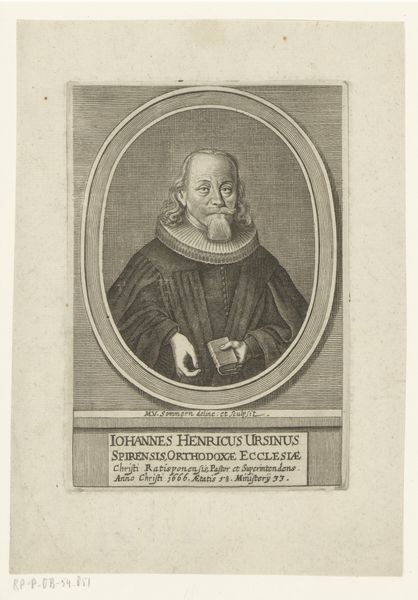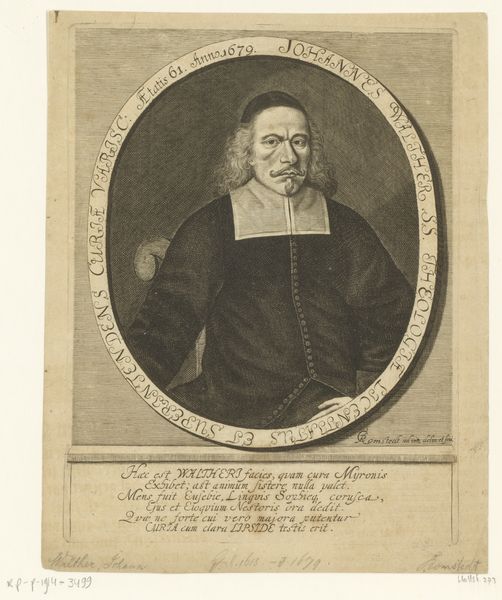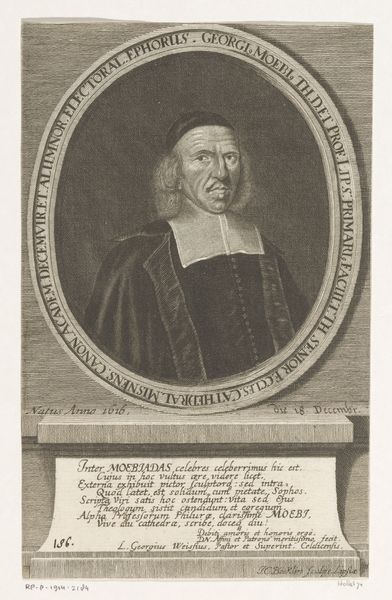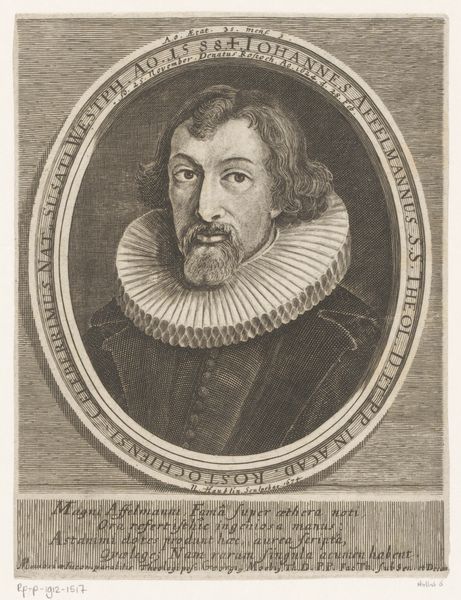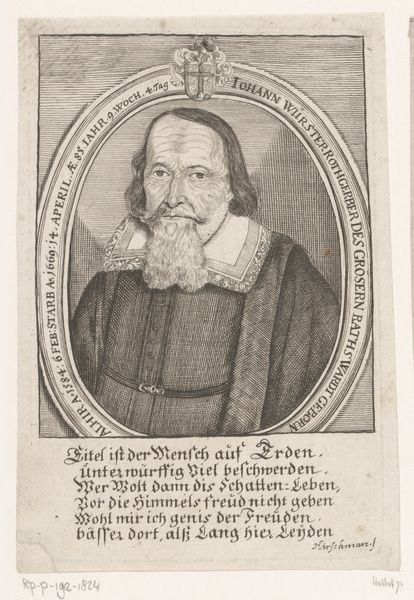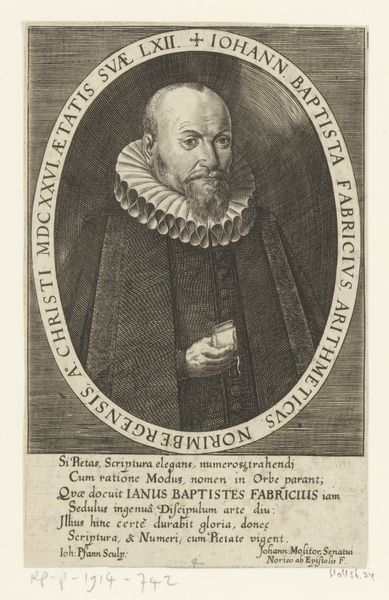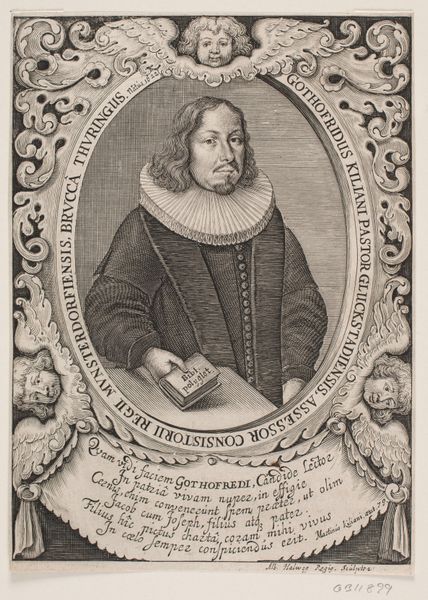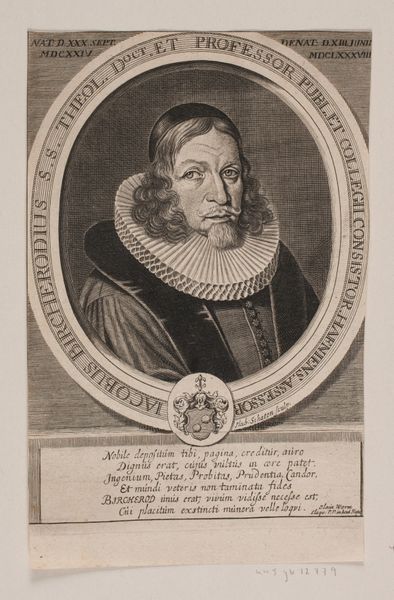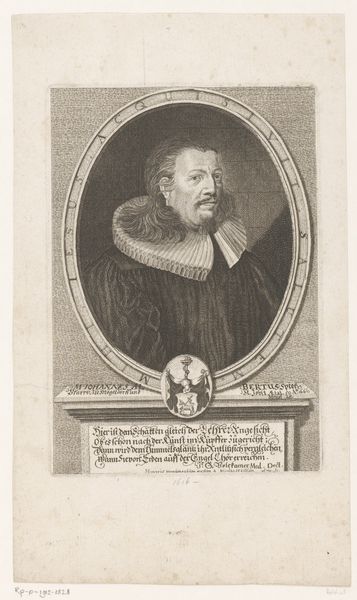
print, engraving
#
portrait
#
baroque
# print
#
engraving
Dimensions: height 157 mm, width 90 mm
Copyright: Rijks Museum: Open Domain
Editor: Here we have Hieronymus van Hensbergen’s “Portret van Franz Simon,” an engraving likely made between 1660 and 1690. There's a formality to it – a very serious-looking gentleman in a ruff, encircled by dense text. How do you interpret this work, considering its historical context and the subject's identity? Curator: This engraving is a fascinating artifact of its time. Beyond just depicting Franz Simon, it speaks volumes about social hierarchies and the role of religious figures. The density of text, for instance, isn't merely descriptive; it's performative, meant to legitimize and solidify Simon's status within his community. Consider the power dynamics at play: Who commissioned this portrait, and for what purpose? Was it intended for public display or private contemplation? Editor: That's interesting. I hadn't considered the text as actively "doing" something. I assumed it was just descriptive. So, are you saying that portraits like these played a role in reinforcing social order? Curator: Precisely. Portraits of prominent figures like Franz Simon, a pastor in Hamburg, served as visual affirmations of their authority and moral standing. The precise details—the ruff, the somber expression—contribute to this construction of power. Think about how such images would have been consumed and understood within the context of 17th-century European society, shaped by religious reformations and burgeoning print culture. Editor: It makes me think about the use of portraits today. Are we still doing the same thing – creating visual symbols of power and status? Curator: That's a great question. While the overt symbolism may have shifted, the underlying dynamics of representation remain remarkably persistent. Consider how politicians or celebrities are presented in carefully curated images, designed to project a particular image and influence public perception. The technology has changed, but the goal of constructing and controlling narratives through visual media remains a powerful force. Editor: Thanks, I am not only considering the artistic aspects, but also the purpose of such artwork for that era, and reflecting on the contemporary parallels to those images. Curator: Absolutely. Understanding the social and historical context allows us to see this engraving not just as a representation of an individual but as a lens through which we can examine broader questions of identity, power, and representation across time.
Comments
No comments
Be the first to comment and join the conversation on the ultimate creative platform.
